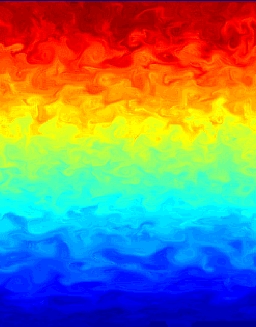PAOC Spotlights
Estimating Eddy Diffusivity in the Southern Ocean
 Geostrophic eddies are a key mechanism for mixing tracers such as heat or carbon across the Southern Ocean but there is an ongoing debate as to the magnitude of eddy mixing in this region: Estimates based on the dispersion of Lagrangian floats find that eddy mixing is largest in the core of the Antarctic Circumpolar Current (ACC), whereas estimates based on satellite-derived surface geostrophic velocities show a suppression in the core of the ACC with enhancement on its northern flank.
Geostrophic eddies are a key mechanism for mixing tracers such as heat or carbon across the Southern Ocean but there is an ongoing debate as to the magnitude of eddy mixing in this region: Estimates based on the dispersion of Lagrangian floats find that eddy mixing is largest in the core of the Antarctic Circumpolar Current (ACC), whereas estimates based on satellite-derived surface geostrophic velocities show a suppression in the core of the ACC with enhancement on its northern flank.In this work using an equivalent barotopic model of the Southern Ocean constrained by altimetric and hydrographic data, we seek to reconcile these differences in estimates of eddy mixing from tracer release experiments and Lagrangian floats.

text

text

text


text

text

text

text
We find the the two estimates converge as long as enough floats are deployed and the tracer is sampled at sufficient resolution. Eddy mixing is indeed suppressed in the core of the Antarctic Circumpolar Current from the surface down to ~1500m, while it is enhanced on its flanks and at depth. This suppression in the core of the ACC appears as large negative lobes in the autocorrelation function of the float velocities. In previous studies these large negative lobes have not been resolved and hence the discrepancies found in the literature are likely the result of poor Lagrangian statistics, rather than any fundamental difference in the various approaches.
The results are discussed in the context of the Diapycnal and Isopycnal Mixing Experiment in the Southern Ocean (DIMES). A major goal of DIMES is to estimate eddy mixing through releases of an anthropogenic tracer and 150 isopycnal RAFOS floats. Based on our numerical results, we discuss how to analyze the data in order to obtain statistically robust estimates of eddy mixing. In particular we will focus on diagnostics for the lateral and vertical structure of eddy mixing which represent a key uncertainty in parameterizations of the effects of eddies in coarse-resolution ocean models used in climate studies.
text